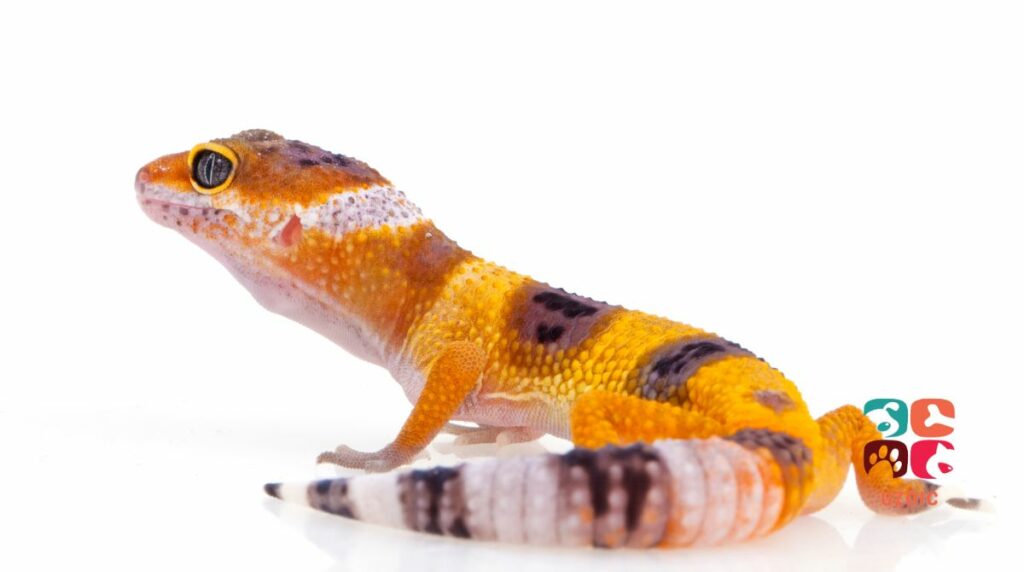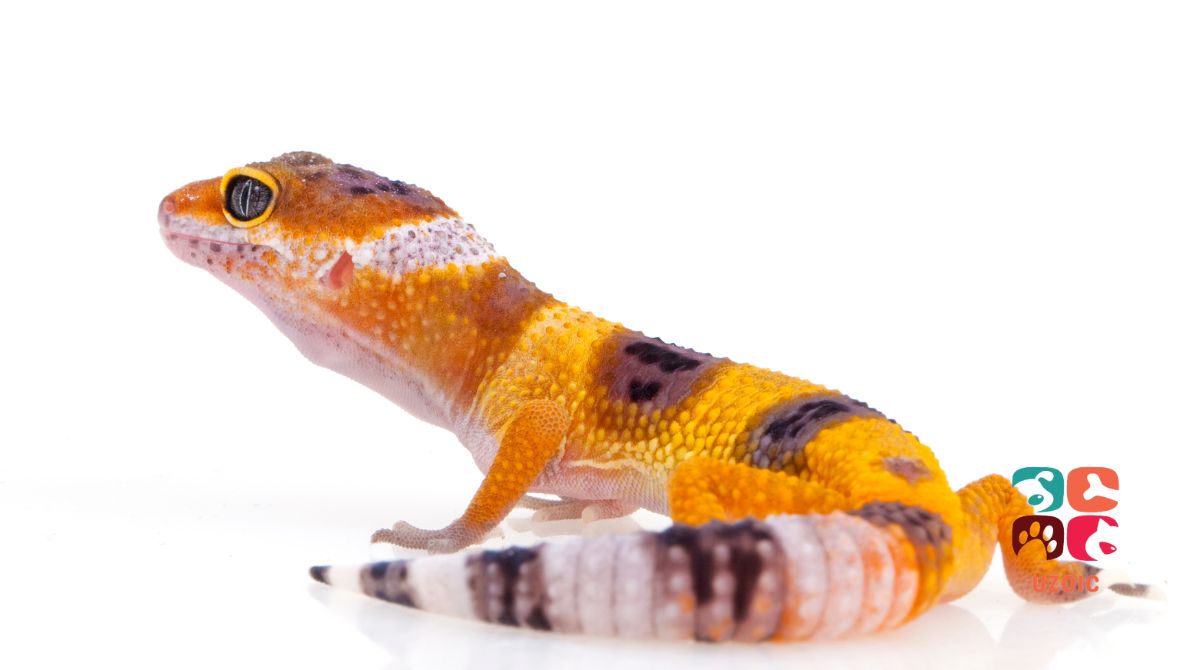If you have a leopard gecko, then you may be familiar with the condition known as tail rot. This is a fairly common problem in leopard geckos and can often be treated if caught early enough. In this blog post, we will discuss the causes of leopard gecko tail rot, how to treat it, and some preventative measures that you can take to help keep your leopard gecko healthy!
Leopard Gecko Tail Rot is caused by a bacterial infection and is often the result of poor hygiene or husbandry practices. The most common symptom of tail rot is a blackening or necrosis of the tail tips. If left untreated, tail rot can spread up the tail into the spine and eventually lead to death. Tail rot is a form of dry gangrene, so immediate treatment is required.
There are also several things that you can do to prevent tail rot from occurring in the first place. First, be sure to practice good hygiene, such as regularly cleaning your leopard gecko’s enclosure and providing a clean water source. You should also take your leopard gecko to the vet for regular checkups to ensure that they are healthy and free from any potential health problems.
Table of Contents
How To Treat Leopard Gecko Tail Rot?

Fortunately, leopard gecko tail rot is fairly easy to treat if caught early enough. The first step is to clean the affected area with a betadine solution or similar antiseptic. Once the area has been cleaned, you will need to apply a topical antibiotic ointment to the affected area. Be sure to follow the instructions on the packaging of the ointment, and apply it as directed.
In some cases, tail rot may be severe enough that oral antibiotics are required. If this is the case, you should take your leopard gecko to the vet for a course of antibiotics. Effective treatment involves amputation of the affected part and then a course of antibiotics. Your vet will be able advise on the procedure that must be followed.
It is important to take immediate care of the tail rot. If the rot spreads to the spine, it could result in paralysis or even death.
How Do You Treat Tail Rot In Leopard Geckos At Home?
You can do several things to treat leopard gecko tail rot at home. The most important thing is to keep the area clean and dry at all times, as this will help to prevent any further infection. You may also want to apply a topical ointment or cream that includes antibiotics, as suggested above, as these can help to fight the underlying cause of the disease. Also, apply a bit of Neosporin on the wound.
If the tail rot is severe and spreads halfway, you may need to take your leopard gecko to an expert reptile vet for treatment. In some cases, the leopard gecko may require surgery to remove the affected tissue. After surgery, your leopard gecko will need to be on a course of antibiotics to prevent any further infection.
Prevention Is Key
As with any disease, it is always better to prevent leopard gecko tail rot from occurring in the first place. So be sure to clean your leopard gecko’s enclosure and provide a clean water source.
What Causes Tail Rot In Leopard Geckos?
Several factors can contribute to the development of tail rot in leopard geckos. These include internal parasites or bacterial infections, exposure to excessive heat or humidity, and nutritional deficiencies. Additionally, physical injuries or mutations to the gecko’s tail can also increase the likelihood of tail rot occurring.
One of the most common causes is chronic exposure to high temperatures and bright lights, which can wear down the gecko’s resistance and make it more vulnerable to infections. Additionally, diets that are low in calcium or high in sugars can make leopard geckos more susceptible to bacterial growth and infections. Another important factor is humidity levels, as leopard geckos that have not been able to properly regulate their moisture levels are much more likely to develop infection symptoms like reduced mobility and visible discoloration.
By using proper preventative care and tail hygiene techniques, leopard gecko owners can significantly reduce their risk of developing this condition.
Can You Reverse Leopard Gecko Tail Rot?
While tail rot cannot be completely cured, it is possible to reverse the condition if it is caught early enough. Treatment involves correcting the underlying cause of the tail rot and providing supportive care, such as wound cleaning and antibiotics. With prompt treatment, leopard geckos can fully recover from tail rot.
Tail rot is a common ailment among leopard geckos that can be caused by a number of factors, including poor diet, stress, and unsuitable housing conditions. Tail rot is characterized by decay and necrosis of the tissue at the base of the tail, and it can eventually lead to the loss of the tail.
How Do You Treat A Leopard Gecko’s Tail Loss?
While leopard geckos are resilient and adaptable animals, it’s normal to feel concerned if your leopard gecko loses its tail. Luckily, you can do a few things to help treat this condition and promote tail regrowth.
The most crucial step is to assess whether or not the animal’s tail is regrowing since this indicates that all of the necessary structures for a full recovery are in place. In many cases, using warm compresses or wrapping the tail with medical gauze may encourage regrowth. Additionally, it is essential to keep the gecko hydrated by offering it a clean water bowl and calcium supplements to provide its body with crucial nutrients for growth. Finally, regular check-ins with your veterinarian can help ensure that your gecko’s recovery process is progressing as it should be. Ultimately, with careful monitoring and care, it is possible to help your leopard gecko fully recover from this condition.
How To Prevent Leopard Gecko Tail Loss?
The best way to prevent leopard gecko tail loss is to provide them with a clean and comfortable environment. Be sure to clean their enclosure regularly and provide fresh water. Additionally, it is important to feed them a nutritious diet and avoid exposure to excessive heat or humidity.
Conclusion
In conclusion, treating tail rot in leopard geckos can be done with a combination of methods, depending on the severity of the infection. If caught early and treated aggressively, many cases of tail rot can be cured. However, if the infection is more advanced or has spread to other parts of the body, your leopard gecko may require surgery for a full recovery.
With early treatment, tail rot is usually easily treatable, and your leopard gecko will make a full recovery! Hope you found this article helpful. If you have any questions or concerns, please reach out to your vet. Thank you for reading!
You may like:
- Why Is My Gecko Changing Color?
- How To Make A Bearded Dragon Dig Box?
- Is Silicone Safe For Reptiles?
- Why Your Bearded Dragon Is Blowing Bubbles: Causes and Solutions
- Can Bearded Dragons Eat Clover?


